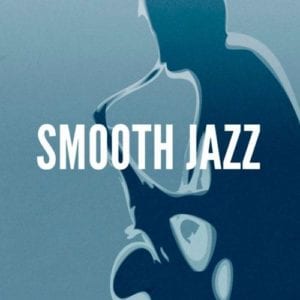
By Dave Austin, “Music Professor”
You, too, may have attended an event at which the background music just wasn’t quite appropriate and intruded on that time when guests were enjoying their cocktail, socializing, or having dinner. A recent question posted by a fellow DJ struck on this topic when he asked about using smooth jazz as background music for his dinner or cocktail hours rather than “burning” some of his tracks which would be better suited to the dance floor.
There seems to be a major loss of understanding as to what actually constitutes “background music.” If you doubt it, just listen to what’s being played many restaurants these days. The music is often far too loud, too uptempo and just inappropriate for a pleasurable dining experience. Apparently, those selecting or programming this music believes diners want be entertained rather than allowed to enjoy a relaxing meal and some conversation with companions. In many cases, high volumes, tracks with wailing guitars, screaming vocals constitute an establishment’s “background” music.
Let’s consider smooth jazz - not to be confused with traditional jazz, Dixieland, be-bop or other variations of the genre. Rather, it is a category unto itself which grew out of jazz fusion and is heavily influenced by rock, R&B, funk and pop music styles. Saxophones – soprano and tenor – and guitars are by far the most popular instruments, but there are also well-known trumpeters, bassists, flautists, keyboardists and vocalists.
Perhaps smooth jazz isn’t commonly used as background by many DJs simply because they’re just not familiar with it. I produced and hosted a smooth jazz radio program for about two and half years and learned that many smooth jazz fans consider it to be the “coolest” or “hippest” music around. Indeed, it can lend a laid-back and sophisticated air to dinners, cocktail hours or other events where the music needs to set a light upbeat mood while remaining non-invasive. Because smooth jazz is predominately instrumental, it seems to naturally fit social occasions at which there is conversation and/or dining.
There are plenty of covers of popular songs, allowing you to pick tracks with recognizable melodies. Mixing in some smooth jazz vocals or even an occasional popular track can help you create a breezy mid to uptempo set that guests will appreciate. Reminder: always keep your volumes at an appropriate level so as not to intrude on guest’s conversations.
If you’d like to start building smooth jazz into your library, here’s an abbreviated listing of some sure-fire artists:
Instrumentalists
Peter White
Gregg Karukus
Dave Koz
Gerald Albright
Michael Lington
Kenny G
Brian Culbertson
Chris Botti
Boney James
David Sanborn
Grover Washington, Jr.
Groups
Fourplay
Acoustic Alchemy
Vocalists
Al Jarreau
Sade
Will Downing
Corrine Bailey Rae
Nora Jones
Diana Krall
Bobby McFerrin
Of course, there are many other artists you may want to consider in addition to those I’ve listed, including some highly recognizable pop artists such as Stevie Wonder, Rod Stewart, Jack Johnson, Michael Buble’, etc. When selecting your tracks, keep the titles and subjects relevant to the event your doing. For example, for a wedding reception you’ll want songs relating to love, happiness, togetherness, etc.
There are some who argue that smooth jazz is dead. Don’t believe it! Although the genre did experience a decline in popularity – air play – beginning in 2007, it has retained a large and loyal following, particularly for live performances. Also, the music has recently made a surprising comeback on the airwaves, mostly on FM HD radio, internet stations and newer low-power FM stations.
I also enjoy smooth jazz away from the DJ booth. When I’m working in my office, on a road trip or just needing some tracks to relax by, this music fits to a tee, and for your dinner and cocktail hours, it can help smooth out your search for the right music.
